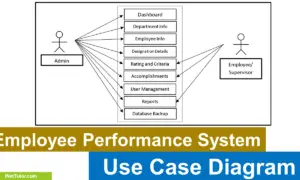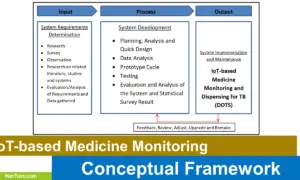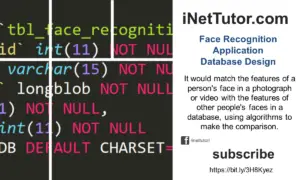Web Based Grading System ER Diagram
This article will discuss the step by step process on how to prepare the entity relationship diagram or ERD of the project entitled Web Based Grading System.
The project entitled Web Based Grading System is a grade management system for college. The project will allow the faculty to input the grade of students (Prelim, Midterm and Final grade) based on their assigned load for the semester or school year. Students can view their grades online and the department has the control on the compilation of grades.
The first step in the development of the Web Based Grading System is to prepare the ER diagram that will serve as the basis later on in the creation of the actual database.
We will create and explain the process of making the entity relationship diagram of Web Based Grading System.
Let’s start from the symbols used in the ER Diagram.
Entity is represented by the rectangle shape. The entity will be our database table of Web Based Grading System later on.
Attribute is represented by the oval shape. This will be the columns or fields of each table in the Web Based Grading System.
Relationship is represented by diamond shape. This will determine the relationships among entities. This is usually in a form of primary key to foreign key connection.
We will follow the 3 basic rules in creating the ER Diagram.
- Identify all the entities.
- Identify the relationship between entities and
- Add meaningful attributes to our entities.
Step 1. In the Web Based Grading System we have the following entities
- Class
- School Year
- Student
- Course
- Year level
- Student Subject
- Student Grade
- Subject
- Faculty Subject
- Faculty
Our design of Web Based Grading System consists of 10 entities; the specified entities will be our database tables in the design and implementation of Web Based Grading database schema.
We will now draw the entities of the Web Based Grading System specified above and it will be represented by a rectangle shape. The image below is the entities identified in the scope of the Web Based Grading System.
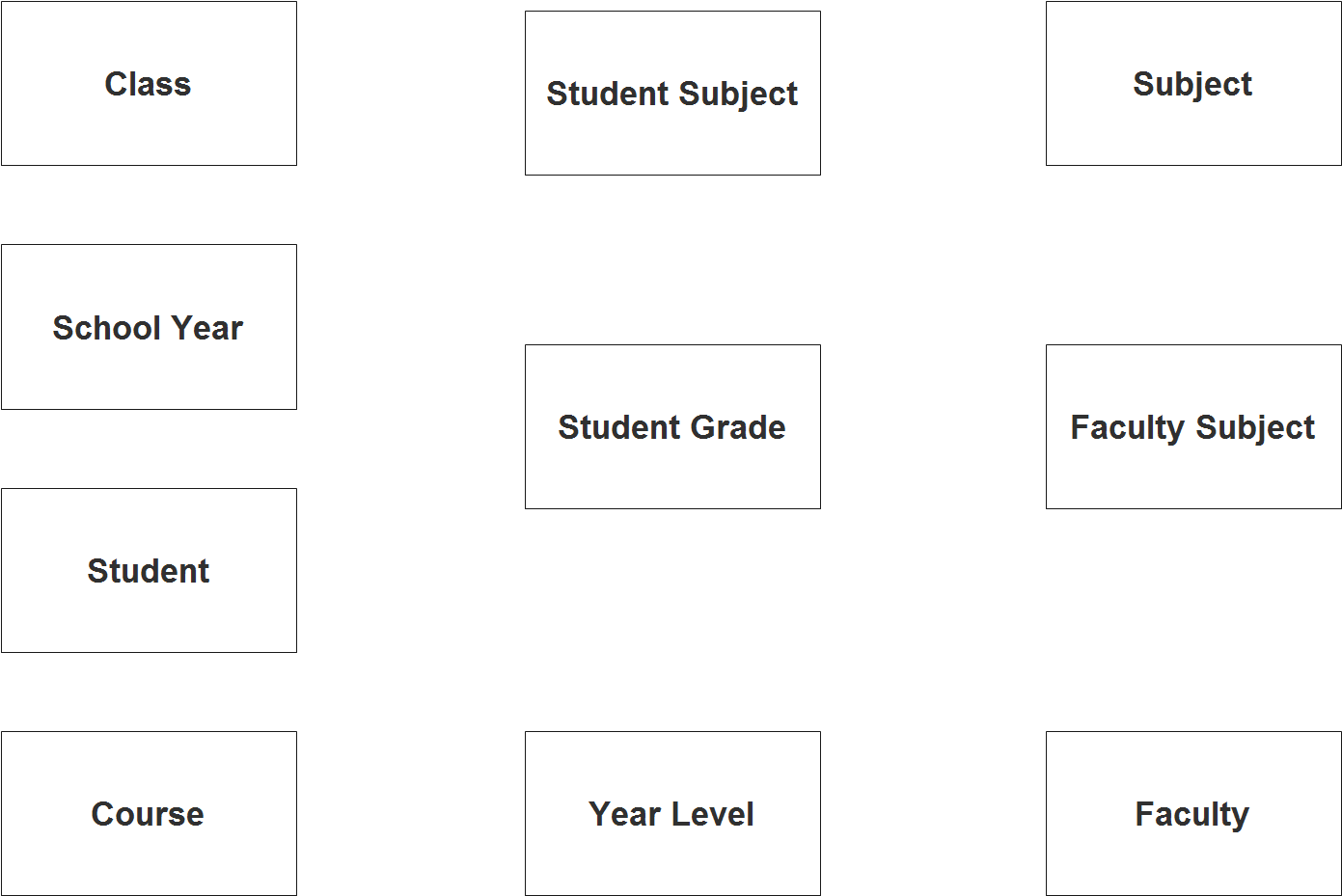
Step 2. After we have specified our entities, it is time now to connect or establish a relationship among the entities.

- The student is enrolled in a course (1 to 1 relationship).
- The student belongs to a class (1 to 1 relationship).
- The student belongs to a year level (1 to 1 relationship). this is in a case of regular students. Irregular students maybe is in 2nd year but with subjects in 1st year or advance subjects in 3rd. In this case the student will be in a year level where the student has most subjects taken.
- The student has multiple subjects taken (1 to many relationship).
- The student subjects came from the curriculum management or subject management. (1 to 1 relationship).
- The student can view their subject grade (1 to 1 relationship).
- The course or the program records the compiles the student grades (1 to many relationship).
- Every class belongs to a year level (1 to 1 relationship). example: BSIT 1A belongs to 1st
- Faculty handles multiple subjects (1 to many relationship).
- Faculty is assigned to the subject of the students (1 to 1 relationship).
- Faculty inputs the grade of the students by term (Prelim, Midterm, Final) (1 to 1 relationship).
Step 3. The last part of the ERD process is to add attributes to our entities.
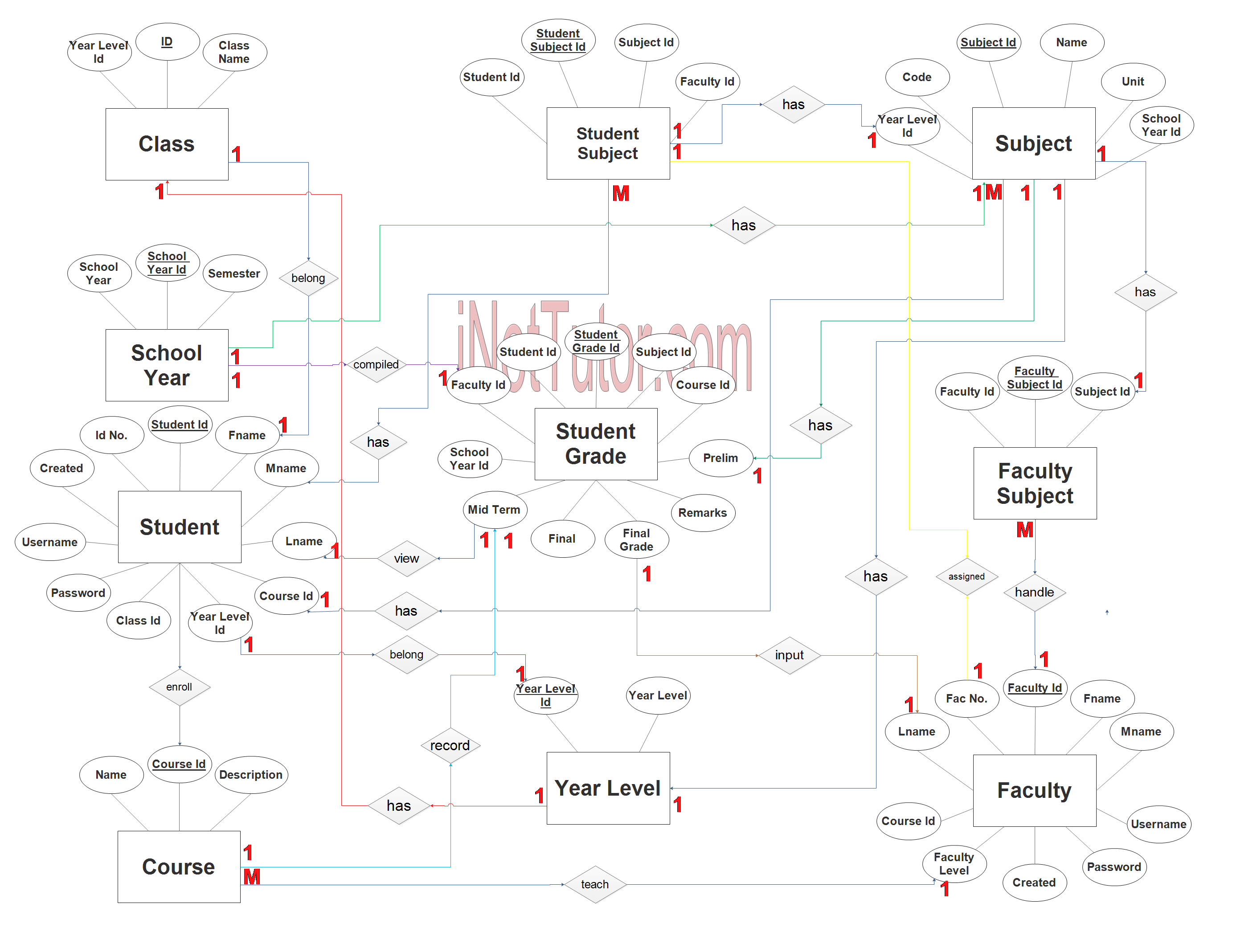
Class Entity has the following attributes:
- ID – primary key represented with underline
- Year Level ID – foreign key
- Class Name
School Year Entity has the following attributes:
- School Year ID – primary key represented with underline
- School Year
- Semester
Student Entity has the following attributes:
- Student ID – primary key represented with underline
- ID No
- Fname
- Mname
- Lname
- Course ID – foreign key
- Year Level ID – foreign key
- Class ID – foreign key
- Username
- Password
- Created
Course Entity has the following attributes:
- Course ID – primary key represented with underline
- Name
- Description
Year level Entity has the following attributes:
- Year Level ID – primary key represented with underline
- Year Level
Student Subject Entity has the following attributes:
- Student Subject ID – primary key represented with underline
- Student ID – foreign key
- Subject ID – foreign key
- Faculty ID – foreign key
Student Grade Entity has the following attributes:
- Student Grade ID – primary key represented with underline
- Student ID – foreign key
- Subject ID – foreign key
- Faculty ID – foreign key
- Course ID – foreign key
- School Year ID – foreign key
- Prelim
- Midterm
- Final
- Final Grade
- Remarks
Subject Entity has the following attributes:
- Subject ID – primary key represented with underline
- Name
- Code
- Unit
- Year level ID – foreign key
- School Year ID – foreign key
Faculty Subject Entity has the following attributes:
- Faculty Subject ID – primary key represented with underline
- Faculty ID – foreign key
- Subject ID – foreign key
Faculty Entity has the following attributes:
- Faculty ID – primary key represented with underline
- Fac No
- Fname
- Mname
- Lname
- Course ID – foreign key
- Faculty Level
- Username
- Password
- Created
Note: all attributes with underline represents the primary key of the entity or table.
The next step is to convert the plan designed on ER Diagram into the actual database, please search for the Web Based Grading System article which was already posted.
Contact us on our facebook page for the softcopy of the Web Based Grading System.
You may visit our facebook page for more information, inquiries and comments.
Hire our team to do the project.
